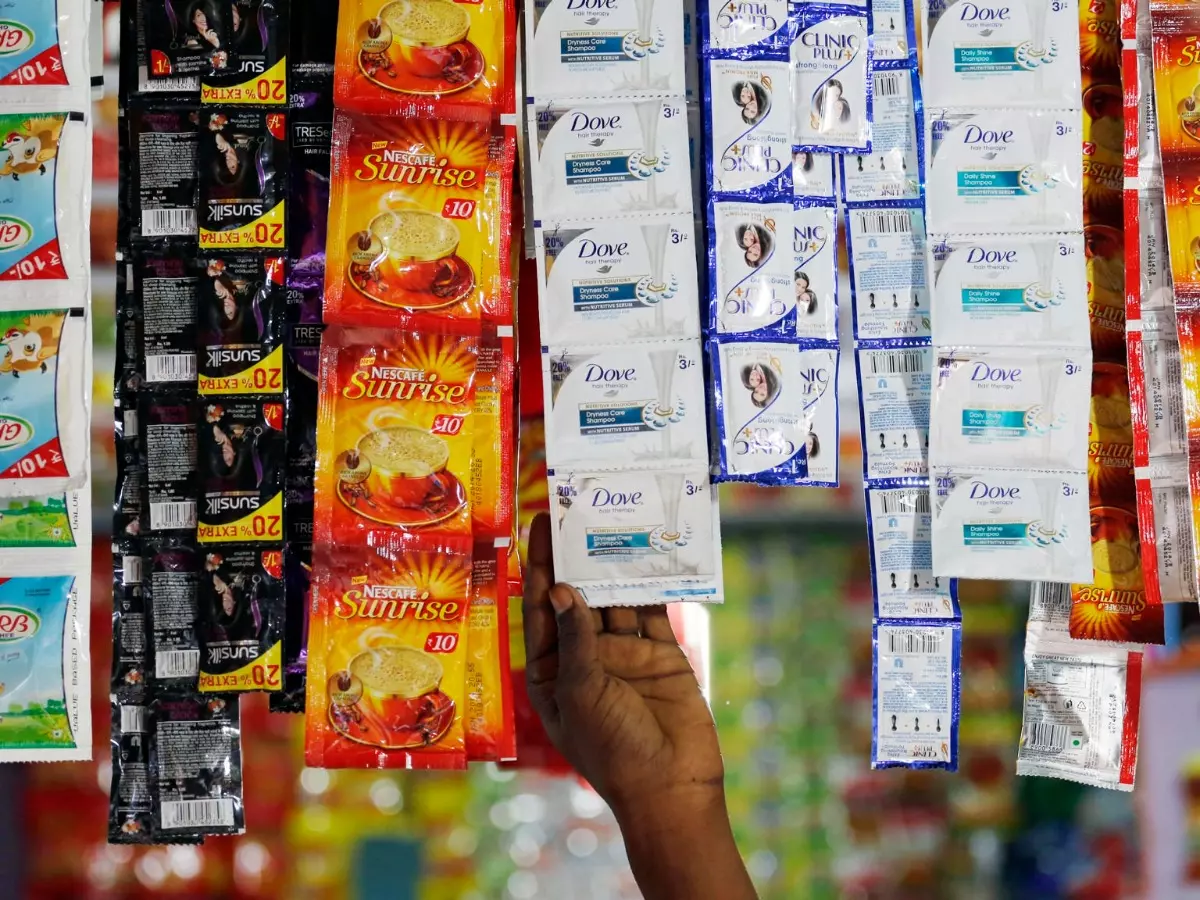Plastic Sachet: Convenience For All But A Nightmare For Environment And Recycling
When it comes to sachets, due to their small size and low recyclable value, the garbage pickers who are the main source of collecting them often don't bother to pick them up. Plastic sachets are particularly problematic, as their multiple layers of different types of materials, adhesives, and dyes make it impossible to recycle.

These days almost every FMCG item that you can think of is available in sachets. Hair oil, shampoo, detergent powder, ketchup, jam and more are available in these tiny packets, that are dirt cheap and are meant for one-time use.
It is convenient and economical from the customer's point of view he or she is getting exactly the amount that is required, without having to spend much.
Also, they can just throw away the sachet after consuming its content.
 BCCL
BCCL
And that is where the 'convenience' of sachet ends. That is because sachets are next to impossible to recycle - means that they will end up in landfills or water bodies chocking them for millions of years.
Recycling challenge
Recycling the millions of tonnes of single-use plastic generated every day in itself is a massive challenge that needs much more to be done.
Over 300 million tonnes of plastic are produced each year, and more than 90 percent of it ends up in landfills, waste dumps, incinerators, and on lands and waterways.
 AFP
AFP
When it comes to sachets, due to their small size and low recyclable value, the garbage pickers who are the main source of collecting them often don't bother to pick them up.
Plastic sachets are particularly problematic, as their multiple layers of different types of materials, adhesives, and dyes make it impossible to recycle.
Left out from the recycling chain, they often leak into the environment, adding to the plastic clogging the oceans, or ending up in landfills.
But with growing consumer awareness about the dangers sachets are causing, FMCG companies had to do something.
 BCCL
BCCL
Tall goals
According to the Break Free From Plastic movement¡¯s annual brand audit report last year, Unilever is the third biggest corporate plastic polluter in the world.
Unilever had launched a programme to help create a value for this waste product so that there is an incentive for people to collect it.
In August 2012, Hindustan Unilever had said that its factory in Pondicherry, has successfully used fuel extracted from post-industrial sachet waste to power its plant.
The company had implemented similar programs in other countries as well.
But a recent study in Indonesia has found that it was a failed experiment as the company could not achieve its goal.
 AFP
AFP
Failed to deliver
An investigation from the Global Alliance for Incinerator Alternatives (GAIA) in Asia Pacific of Unilever¡¯s sachet recycling efforts in Indonesia revealed that the company¡¯s claims of the recyclability of sachets using a controversial method that industry calls ¡°chemical recycling¡± has been largely a failure. Two years after the highly-celebrated launch of the pilot plant in Indonesia in 2017, the company secretly shuttered the operation due to insurmountable logistical, financial, and technical challenges.
In Indonesia, plastic sachets make up 16 percent of plastic waste, amounting to 768,000 tonnes per year.
It found that Unilever aimed to collect 1,500 tonnes of sachet waste for recovery in 2019 and 5,000 tonnes in 2020, but the program failed and CreaSolv was shuttered after two years.
The goal was to recycle multilayer sachets to make new sachets, but due to the low recyclability potential of sachets and technological failures, the plant could only process mono-layer sachets to make a different kind of packaging.
 AFP
AFP
Unilever had sought to prove that with this new technology plastic sachets could be part of a circular economy and recycled multiple times, but forty to sixty percent of waste feedstock was lost as a residue during the process, and the recyclability of the product is unproven.
¡°We had our reservations when we first heard of the project,¡± said Froilan Grate, GAIA Asia Pacific Regional Coordinator. ¡°But we are always open to innovations as long as it will not create additional problems that the people will have to deal with later. Clearly, Unilever¡¯s CreaSolv project is not a solution to the sachet problem. This is another of Unilever¡¯s deceiving publicity stunt designed to altogether avoid the problem (single-use plastics) and the solution (redesign their packaging) so its business as usual. In the end, the plastic problem worsens and people are blamed for it.¡±
For more on news and current affairs from around the world, please visit Indiatimes News.
